There is no denying the excitement that comes when December appears, knowing that Christmas is right around the corner. It’s a time of year to spend time with loved ones, exchange gifts, tuck into delicious food and soak up the joyous atmosphere.
The festive season brings joy and merriment worldwide, but not everywhere celebrates Christmas in the same way as we do in the UK. Around the world, each country adds its unique touch to the Christmas festivities.
If you are planning to move overseas it could be a good idea to get up to speed on what you have got to look forward to. You could also consider adopting some of these traditions for your Christmas celebrations!
Join us on a journey around the globe as we explore the diverse ways Christmas is celebrated near and far.
Australia
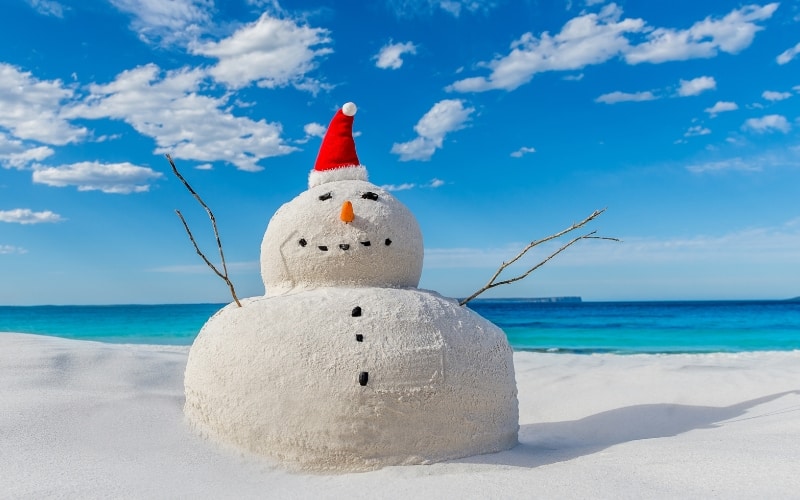
Christmas in Australia is a unique and festive celebration marked by a blend of traditional customs and the distinctive characteristics of the Southern Hemisphere’s summertime.
Unlike the Northern Hemisphere, Christmas in Australia falls during the summer season, enabling locals to embrace the warm weather by engaging in outdoor activities, beach outings and barbecues. Many Australians head to the beach to celebrate Christmas Day, and families and friends gather for picnics, barbecues and games, enjoying the sun, sea and sand.
While snow is absent during an Australian Christmas, you’ll find houses adorned with festive decorations. Australians decorate their homes with lights, Christmas trees and other ornaments, creating a joyous atmosphere. Christmas meals are often enjoyed as a festive feast with family and friends. Traditional Christmas foods include roast meats, seafood, salads and the famous Christmas dessert, pavlova.
Santa Claus doesn’t arrive on a sleigh pulled by reindeer in Australia. Instead, he is often portrayed arriving on a surfboard or in other creative ways that reflect the Australian lifestyle.
New Zealand

Christmas in New Zealand is a festive celebration that combines traditional customs with the unique Kiwi way of life. It occurs during the summer in the Southern Hemisphere, so the weather is warm and sunny. Kiwis take advantage of the summer season by engaging in outdoor activities and enjoying the beaches. Many New Zealanders celebrate Christmas with outdoor barbecues, picnics and family gatherings. Beach outings and camping trips are popular ways to enjoy the holiday season.
While the Northern Hemisphere associates Christmas with snow, New Zealanders embrace a different kind of festive decor. Homes are adorned with lights, ornaments and Christmas trees, often featuring a mix of traditional and Kiwi-themed decorations. The native Pohutukawa tree, with its vibrant red flowers, is often referred to as the New Zealand Christmas tree. Its blooming coincides with the holiday season, and its presence adds a unique touch to festive decorations.
Like in Australia, Christmas meals in New Zealand typically feature a mix of traditional and seasonal foods. Barbecued meats, seafood, salad and pavlova, are commonly enjoyed during Christmas feasts. Santa Claus is often portrayed in a Kiwi context, adapting to the warmer climate. Instead of a sleigh, Santa might be seen on a surfboard or surrounded by New Zealand’s iconic symbols like the kiwi bird.
Canada
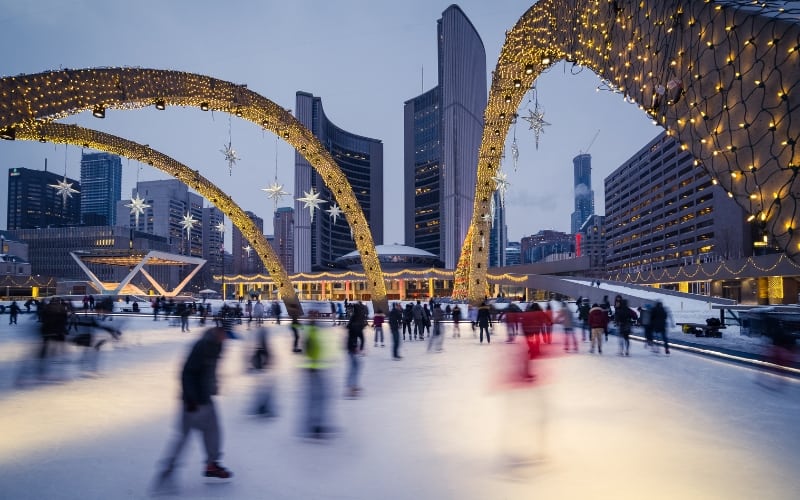
Canada experiences a cold winter during Christmas, often with snow-covered landscapes. Cities and towns are beautifully decorated with lights, wreaths, and festive displays, creating a winter wonderland. Canadians decorate their homes with Christmas trees, lights, ornaments, and wreaths. Many households have a mix of traditional decorations and items reflecting their cultural backgrounds. Canadians also embrace winter sports and activities during the holiday season. Ice skating, skiing, snowboarding, and sledding are popular, and many communities set up outdoor ice rinks.
Christmas markets, also known as holiday markets, pop up in various cities and towns in Canada. These markets feature artisanal goods, seasonal treats and festive entertainment, providing a joyous atmosphere. Across Canada, communities organise Santa Claus parades. These parades feature festive floats, marching bands, and Santa Claus himself, often making appearances in major cities and small towns alike. Cities like Toronto and Vancouver host Christmas lights festivals, where streets and landmarks are adorned with dazzling light displays. Families often visit these areas to enjoy the festive ambience.
Canada’s multicultural population contributes to a diverse range of Christmas feasts. Traditional dishes, cultural specialities, and festive treats from around the world are enjoyed during family gatherings and holiday meals. Canadians typically celebrate Christmas with a hearty dinner that includes roast turkey, ham, stuffing, and a variety of side dishes. Festive desserts like plum pudding and butter tarts are also popular.
USA
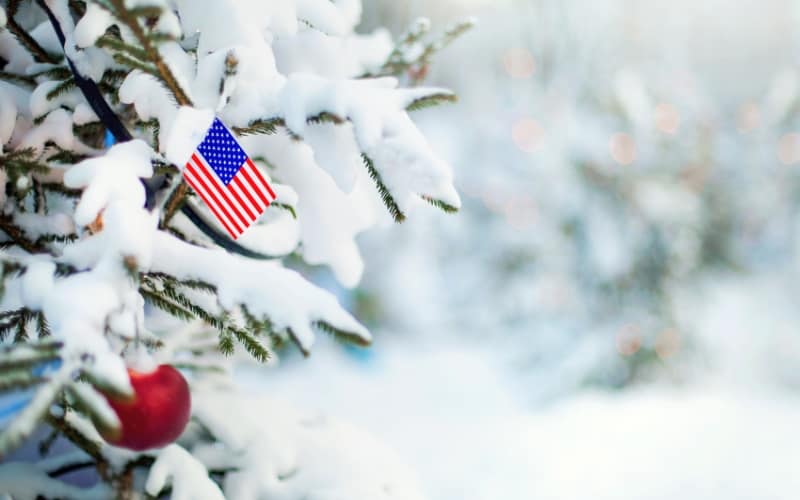
Christmas in the USA is a festive and joyous occasion celebrated with a blend of religious traditions, cultural influences, and festive customs. Americans decorate their homes with Christmas trees, lights, ornaments, wreaths and stockings. Many neighbourhoods are adorned with elaborate light displays, and some families participate in friendly competitions for the best decorated homes. The Christmas tree is a central symbol of the holiday. Families often gather to decorate the tree, and many cities host tree lighting ceremonies, marking the official start of the holiday season.
The figure of Santa Claus plays a significant role in American Christmas celebrations. Children eagerly anticipate Santa’s arrival on Christmas Eve, and many families participate in the tradition of leaving out cookies and milk for Santa. Exchanging gifts is a prominent part of Christmas celebrations. Families and friends exchange presents, and many workplaces organise gift exchanges or Secret Santa activities.
Christmas Eve is often celebrated with festive dinners, candlelight services at churches, and anticipation for the arrival of Santa Claus. Family gatherings, special meals, and the opening of presents mark Christmas Day. Christmas meals vary, but common dishes include roast turkey or ham, stuffing, mashed potatoes, and various desserts like pumpkin pie, fruitcake, and Christmas cookies.
Many Americans engage in acts of kindness and charity during the Christmas season. Volunteer opportunities, food drives, and efforts to assist those in need are common.
Spain
Christmas in Spain is celebrated with a unique blend of religious traditions, cultural customs, and lively festivities. Nativity scenes are an essential part of Spanish Christmas traditions. Elaborate miniature representations of the Nativity scene are displayed in homes, churches, and public spaces. The Spanish Christmas Lottery, known as “El Gordo” or The Fat One, is a major event. It takes place on December 22nd, and the drawing is broadcast on television. Winning the lottery is considered a stroke of luck and brings joy to many households.
Christmas Eve, or Nochebuena, is one of the most important nights of celebration. Families gather for a festive dinner that often includes traditional dishes such as roast lamb, seafood, and sweets. Many attend midnight Mass, and there may be more feasting and celebrations after the service. Christmas Day is typically a quieter day, often spent with family. Special meals continue, and families exchange gifts. Some may attend another church service or participate in community events.
Three Kings’ Day, celebrated on January 6th, marks the arrival of the Magi to visit the baby Jesus. It is a significant holiday in Spain, often more eagerly anticipated than Christmas Day. Parades featuring the Three Wise Men occur in many cities and towns, and children receive gifts on this day.
Christmas sweets are a delightful part of the celebration. Turron, polvorones and marzipan are popular treats during the holiday season. Christmas markets pop up in cities and towns across Spain. These markets offer festive goods, decorations, and a variety of holiday treats.
Greece
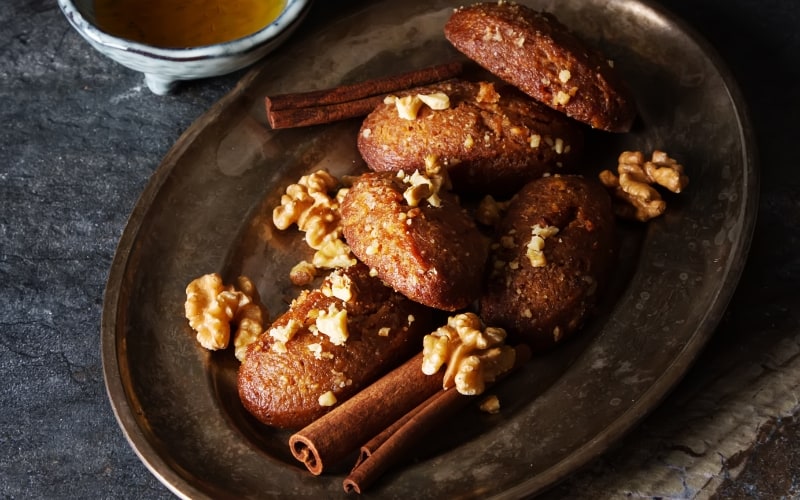
Christmas is a deeply religious celebration in Greece. Many Greeks attend church services, including the Midnight Mass on Christmas Eve. The religious observances emphasise the birth of Jesus Christ, and church bells ring to mark the occasion. Christmas Eve, known as “Protomagia,” is a special night when families come together for a festive meal. After the meal, many attend the Midnight Mass service, followed by a feast that often includes the breaking of a special Christmas bread.
Christmas in Greece is associated with delicious traditional foods. Roast lamb or pork is a common centrepiece for the Christmas meal. Other festive dishes include stuffed grape leaves, moussaka, and a variety of sweets like melomakarona. Christmas is a time for family gatherings and reunions. Families come together to share meals, exchange gifts, and enjoy each other’s company.
In the days leading up to Christmas, children and adults go door-to-door singing Christmas carols known as “Kalanta.” The singers are often rewarded with treats or small gifts. This tradition fosters a sense of community and joy. Homes, streets, and public squares are adorned with festive decorations and twinkling lights. Christmas trees are a common sight, and many cities, including Athens and Thessaloniki, feature elaborate light displays.
The Christmas season in Greece extends beyond December 25th, with celebrations continuing through the New Year and culminating in the Feast of Epiphany on January 6th.
Israel

In Israel, Christmas is primarily celebrated by the Christian minority. The majority of the population, which consists of Jewish and Muslim communities, does not celebrate Christmas as a religious holiday but may observe some of the festive elements in a more secular manner.
Christian communities in Israel, particularly in cities like Bethlehem, Jerusalem and Nazareth, celebrate Christmas with religious observances. Church services and liturgies take place, with special emphasis on the birth of Jesus Christ. Pilgrims and local Christians participate in these events, often attending Midnight Mass and other ceremonies. Areas with significant Christian populations, such as Bethlehem and Jerusalem, are adorned with festive decorations and lights. Christmas trees, both natural and artificial, are displayed in public spaces and homes.
Some Christian communities organise processions and parades, where the annual Christmas parade attracts locals and visitors alike. The processions often include marching bands, traditional costumes, and religious symbols. Christian communities gather for festive meals and community events to celebrate the holiday season. These gatherings foster a sense of community and shared joy.
While Christmas is not a public holiday in Israel, some secular celebrations may take place in cities with diverse populations. Shopping centres and commercial areas may be adorned with decorations, and some businesses offer holiday promotions.
Brazil
In Brazil, Christmas is a festive and joyful occasion celebrated with a unique blend of cultural traditions, religious observances, and vibrant festivities. Christmas in Brazil is primarily a religious celebration. Many Brazilians attend Midnight Mass on Christmas Eve.
Churches are beautifully decorated, and the Mass often concludes with hymns and carols. Cities and towns across Brazil are adorned with colourful decorations, lights, and Christmas trees. Public spaces, commercial areas, and homes are illuminated with festive displays, creating a lively and festive atmosphere. Nativity scenes are a popular Christmas tradition in Brazil. These scenes depict the birth of Jesus and are often set up in homes, churches, and public spaces.
Brazilians are known for their love of celebrations, and Christmas is no exception. Fireworks displays light up the night sky, especially in larger cities. Festive events and parties are organised, bringing communities together to celebrate the holiday season. Gift-giving is a common practice during the Christmas season. Families and friends exchange presents, and Secret Santa (Amigo Secreto) is a popular tradition in which individuals draw names to determine whom they will buy gifts for.
Christmas dinners in Brazil often feature traditional foods, including turkey, chicken and salted codfish. Families gather for special meals that may include rice and assorted sweets. In Brazil, Santa Claus is known as “Papai Noel.” He is depicted as a plump, jolly figure dressed in red, similar to the traditional Santa Claus. Papai Noel is a central figure in Christmas celebrations, and children eagerly await his arrival to deliver gifts.
South Africa
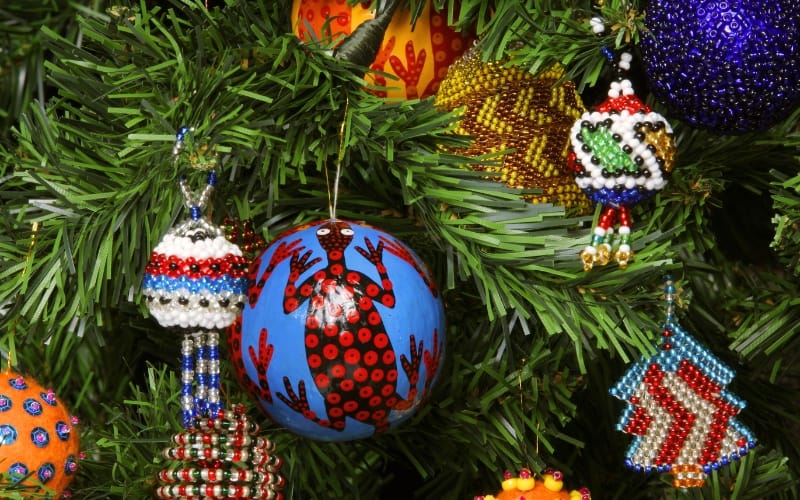
Christmas in South Africa is a unique and diverse celebration that reflects the country’s multicultural population and the influence of both European and African traditions. Christmas in South Africa occurs during the summer months, so the celebrations often take place in warm and sunny weather.
Many South Africans spend the day outdoors, enjoying picnics, barbecues and festive gatherings with family and friends. South Africa has a diverse religious landscape, and Christmas is celebrated by Christians across the country. Many attend special church services, including Midnight Mass on Christmas Eve, to commemorate the birth of Jesus.
Cities, towns, and homes are adorned with Christmas decorations, lights, and festive displays. Christmas trees are a common sight, and some families choose indigenous trees like the baobab or flamboyant tree as a unique twist. Christmas carols are sung in churches and at community events. South Africans also enjoy festive music, including songs that blend traditional tunes with a local flair. Some regions have unique musical performances and celebrations.
Christmas meals often feature a mix of traditional South African dishes and international favourites. Meats, particularly lamb and sausages, are popular for festive gatherings. Other traditional foods may include bobotie, a spiced minced meat dish) and malva pudding.
Given the warm weather, outdoor activities are a significant part of Christmas celebrations. Families often head to parks, beaches, or nature reserves for picnics and recreational activities. It’s a time for relaxation and enjoying the beauty of the South African landscape.
France
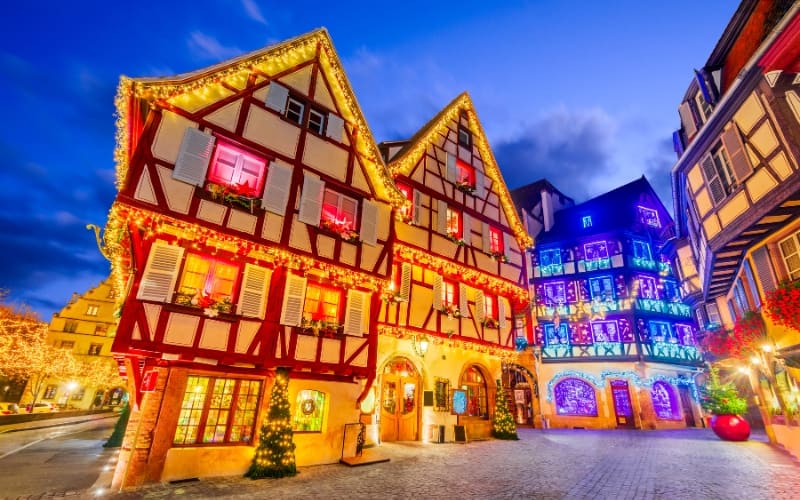
Cities and towns across France are adorned with dazzling Christmas lights and decorations. Festive markets pop up in various locations, offering an array of seasonal goods, crafts, and local treats. Similar to the global figure of Santa Claus, French children eagerly await the arrival of Père Noël. Père Noël is believed to bring gifts to children on the night of December 24th. Families exchange presents and enjoy the excitement of unwrapping gifts together.
The tradition of decorating Christmas trees is widespread in France. Homes, public spaces, and even shops feature beautifully adorned trees. French families often gather to decorate their Christmas trees on the evening of December 24th. The main Christmas celebration in France takes place on Christmas Eve, known as “Réveillon.” Families and friends come together for a grand feast featuring a variety of culinary delights, including seafood, roasted meats, foie gras, and decadent desserts.
The Christmas feast in France is a key part of celebrations. Traditional dishes include roasted meats, particularly roast turkey or goose, oysters, escargot, a yule log and various regional specialities. Advent calendars, with small doors revealing treats each day leading up to Christmas, are popular in French households. Calissons, a traditional French sweet made with almonds and candied fruits, are also enjoyed during the holiday season.
How will you celebrate your Christmas this year?
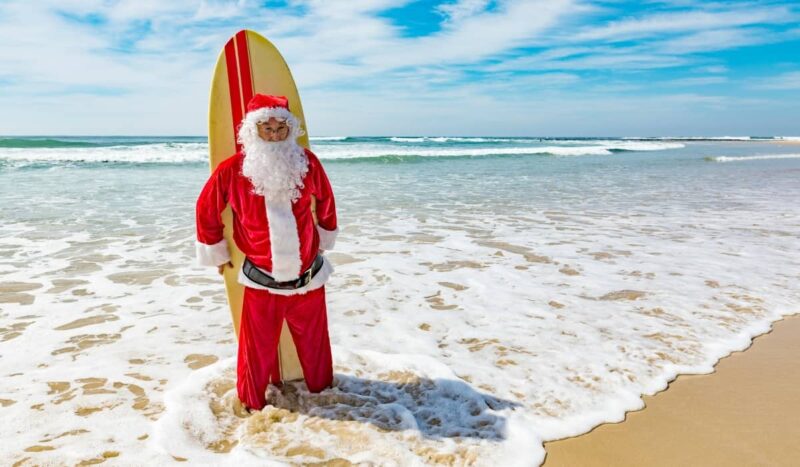
As you can see, there really are a lot of ways to celebrate Christmas around the world. If you are planning a move abroad, you too could end up trying new traditions in the lead up to the big day, and you might even live somewhere that celebrates a Christmas filled with sunshine, beaches and warmth.
To find out more about organising the removals side of your relocation, get in touch with United International Removals.
